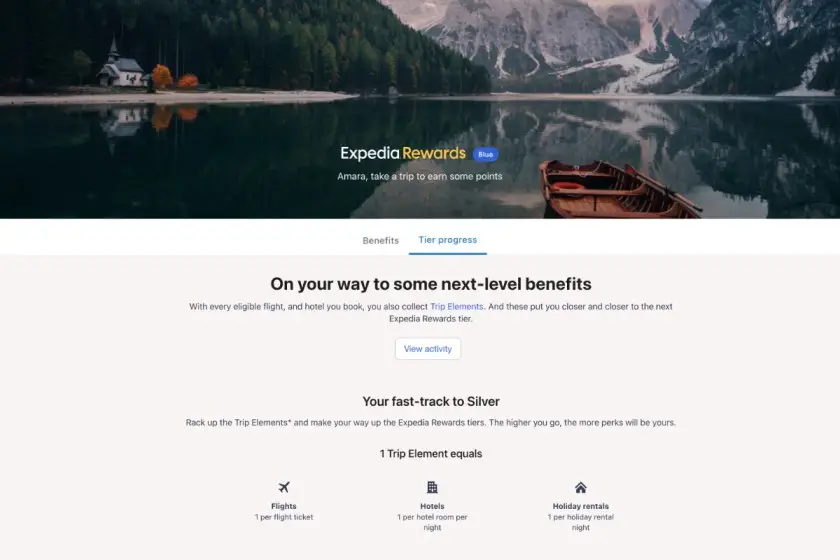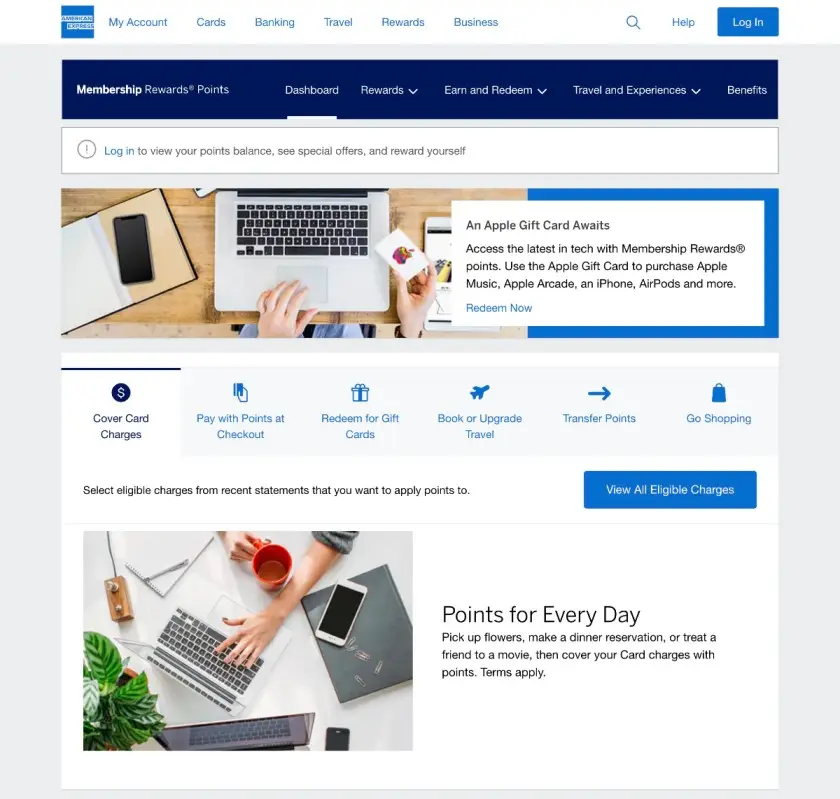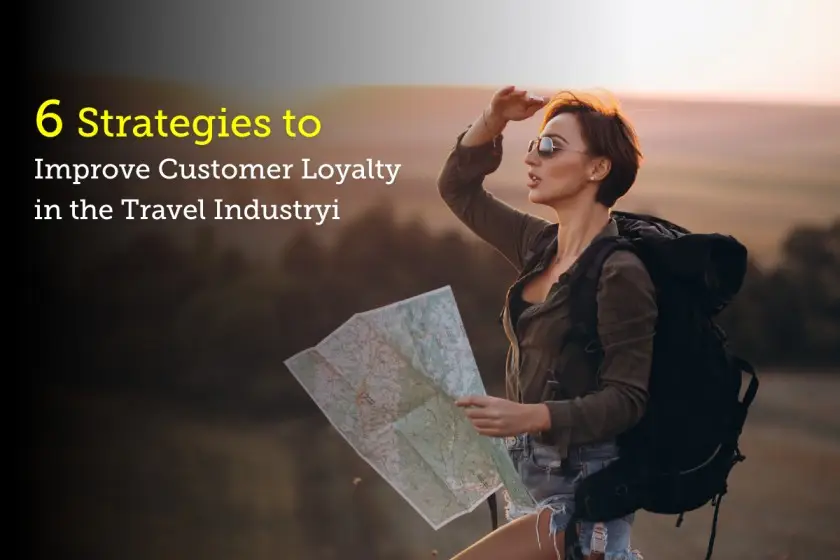Loyalty in the Travel Industry Landscape
COVID-19 has impacted growth in several industries. The travel and hospitality industry has suffered a major hit. For almost two years, there has been a shutdown of operations. As a result, many brands shut down their business, but some thrived.
Even then, brands with a loyal customer base have survived the pandemic. Keeping your customers engaged and providing memorable experiences helps build a loyal customer base. For example, brands have launched virtual tours and turned their hotels into Work from home offices for their members.
So, what kept the travel industry alive during the pandemic? It’s their loyal customers.
According to a report, 77% of customers believe that brands aren’t doing enough to earn their loyalty. Interestingly, 84% of the customers are willing to pay more if they have a better experience.
Now, the question is, how to build such a loyal community in the travel industry?
Let’s dive in to find out!
Top 6 Strategies to Win Customer Loyalty in the Travel Industry
Leaders in the traveling industry already know the secret of running a successful business. Brands like Expedia, Virgin Airlines, Thomas Cook, and many more are leveraging these strategies to win their customer’s trust.
1. Enhance Customer Experience to Build Trust
According to PWC for 73% of consumers, the secret to building customer loyalty is a good experience.
Customer experience is the most crucial factor in bringing customers back to your brand. But what are the ways to achieve an enhanced customer experience?
To give your customers an unforgettable experience, you have to focus on these three factors –
- Flexibility
Plans can change or reschedule any day for anyone. The traveling industry is flexible by nature. Your customers expect the same from you. Flexibility to change their bookings, cancel their flights, get the best hotel deals, and variations in travel destinations.
Customers expect to see booking policies and processes upfront; it helps them manage their traveling plan with flexibility.
United Airlines provides this information on their homepage that they have dropped their change fees (for changing flights). In addition, they clarify that the removal of change fees is only applicable to US flights.
- Convenience
Convenience is amongst the top expectations a customer has from brands. If your customer has to wait for hours to get in touch with customer care, if they are not getting a response over social handles, they won’t come back to you.
Make the process of booking tickets easy, ensure there is no complexity in taking any user action. It’s simple, make it easy for customers; they will come back.
- Technology
The digital experience of customers has changed. Technology plays a significant role in enhancing the customer experience. Today, making a separate app for your customer is the minimum requirement of your customer.
A great UI/UX, seamless integration of payment methods, easy to use navigations attracts your customer to come back.
Airbnb provides detailed itineraries within its apps. Bandsintown figured out that customers not only need to purchase tickets and transportation but need directions and lodging. So, they partnered with travel brands and integrated all features to provide one shop experience.
2. Build Your Community of Travelers
People love belongingness. The brand community serves the same purpose.
Travel lovers want to surround themselves with like-minded people. Sharing traveling experiences and living on the travel stories of other travelers makes them feel alive. The brands with an active community of their users are the most successful. So, think, and develop a strategy to build your brand community to keep your customers engaged.
Airbnb is a great example. It started as a community marketplace in 2008; later, people joined the community by sharing reviews, stories, and opinions. The power of people has made it one of the biggest brands in the travel industry.
3. Deliver a Frictionless Digital Experience
Customers expect a seamless omnichannel experience from brands. They may start their discovery journey from their smartphone but book their flights on laptops. Some digital nomads make complete transactions on their mobile phones.
Customers use multiple channels to receive offers, information, support and manage bookings. As a brand, you need to provide a consistent experience to cater to your customer’s needs through various channels.
British Airways tracks the digital experience of its customer’s journey. Using the heatmap and analytical tools, they keep an eye on the hiccups customers can encounter. This helps them to enhance the customer experience.
4. Reward Brand Loyalty
Rewarding customers’ loyalty goes a long way in bringing customers back to your brand. Customer loyalty programs are among the best-proven strategies to build customer loyalty.
According to a survey by Nielsen, 84% of customers are more attracted to a brand offering a loyalty program.
How can you reward customers for their loyalty?
- Give them loyalty points to be redeemed as discounts while booking flights, booking hotels, and planning trips.
- Reward them for referrals. Encourage your users to share their brand with their friends, family, and social circle.
- Partner up with other brands from different related industries, such as hotels and restaurants, to avail discounts to your customers.
- Reward customer loyalty based on your buyer’s persona. Don’t use a one-size-fit program.
- Reward their spending. Offer VIP points or special offers to those who spend more on travel.
How Expedia is Winning Customer Loyalty through Its Loyalty Programs

Expedia has more than 145 million loyal customers enjoying the loyalty benefits of its reward programs. It has helped its loyal customers save more than $10 billion on travel.
Expedia loyal customers earn –
- 1 point per $5 spent on flights
- 2 points per $1 spent on hotels
- 2 points per $1 spent on packages
- 2 points per $1 spent on activities
Every dollar they spend comes back to them through loyalty programs. It encourages them to come back.
Based on the total spent, the Loyalty program falls into three categories. The members are given blue, silver, and gold membership based on their average spending.
Users gain silver status after spending $5000, are eligible for bookings, or stay seven qualifying hotel room nights. The users with a spend of more than $10000 fall in the gold category and are qualified on bookings or stay 15 qualifying hotel room nights.
The loyal customers can now use their loyalty points on other brands of Expedia such as CarRentals.com, CheapTickets, Trivago, Vrbo, and many more.
The Super Effective Loyalty Program of American Express Global

American Express is known for its Loyalty programs. It has three loyalty cards for its loyal customers, Green, Gold, and Platinum cards. These loyalty cards come with many benefits and perks, from signing bonuses to discounts on bookings.
- The green card is the most basic membership card that allows you to carry your balance and rewards you one point for every dollar spent.
- The Gold card offers you double reward points at gas stations and supermarkets. From sign-up bonuses to rewards, it provides everything. You can use it up to 25,000 points, with an additional 15,000 after $30,000 spent in a year.
- The platinum card is the top-tier card. It offers a huge bonus, to the tune of 40,000 or 50,000 points. It also provides a $200 airline fee credit, luxurious lounge excess, and more.
5. Personalized Marketing & Communication
It’s the era of Personalization. Customers want to feel special. They are looking for travel destinations, packages, and tickets that cater to their needs. The brands that communicate with their customers personally and leverage tools for personalized marketing are building a loyal customer base.
How can you do that?
- Targeted Emails – Use customer data, previous bookings, and recent browsing activities to show them hyper-personalized marketing campaigns. Offer them the best discounts and guidance for special occasions.
The Savoy leverages personalized email to match their preference for upcoming trips. For example, based on the browsing data, they send restaurant and travel recommendations to their loyal customers to enhance their traveling experience. This type of targeted email campaign helps customers to make better decisions.
- Tailored Recommendation- Personalized communication can give tailored recommendations to the customers catering to their interests.
Using the previous references, booking history, and customer data, AI can suggest the best recommendations to the customers. The best hotels, room size, budget-based accommodations, and food recommendations tailored for customers. Later can be targeted through emails or social media.
- Marketing targeted to the Millennials – Millennials have travel goals. This customer segment is of high value for the travel industry. Therefore, brands care about coming up with various campaigns and offering to lure this high-value segment.
For example, Delta Air Lines invested in 2Ku in-flight connectivity to get Wi-Fi connectivity throughout the flight. Furthermore, they have installed the first-ever biometric terminal in the US to reduce waiting for passengers. In addition, they have partnered with LinkedIn to offer free courses related to traveling.
6. Entice and Engage on social media
Travel enthusiasts love travel videos, travel stories, and recommendations. Keeping them engaged through social media platforms is an essential strategy for travel brands to keep them engaged until their next trip.
Create different travel-related content, contests, and quizzes to keep them engaged. Travel vlogs, video content, and blogs are among the favorite types of content in travel communities.
Bookings.com is nailing its social media strategy with IGTV videos and video content to keep its customers engaged. It uses behind-the-scenes videos and customer experience stories at its prime content to entice the users.
Airbnb is using social media accounts for providing customer care support. It has a different social media account to help customers solve their queries and problems.
Build Loyalty in Travel Industry With Zinrelo

Zinrelo is a top-rated loyalty platform that is helping brands globally, create the most engaging loyalty rewards program. Zinrelo is a contemporary loyalty rewards platform that helps brands maximize their sales and ensure repeat business. The company supports multiple dimensions of loyalty, as well as omnichannel deployment across mobile apps, desktop computers, and in-store facilities.
The backbone of customer loyalty in the travel industry is Customer Loyalty programs. With its unique propositions of data sciences and analytics, strategic consultations, and a robust technology platform, they understand that each business is unique and therefore a singular approach to launching a loyalty program is inefficient.
Conclusion
The travel industry is competitive. To stay ahead of the competition, you need to have a strong community of loyal customers to back your brand. Though building such a community isn’t a piece of cake. Using the above strategies can help you boost your customer loyalty.


